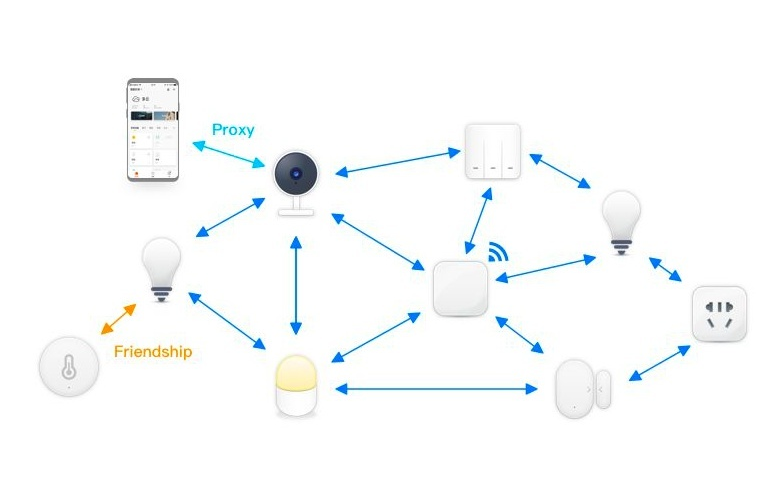
Configuring a Bluetooth Mesh network can be a complex process, but here are the basic steps involved:
- Choose the appropriate devices: The first step in setting up a Bluetooth Mesh network is to choose the devices that will make up the network. These devices should all be Bluetooth Mesh-enabled and have the necessary features and functions for your specific application.
- Create the mesh network: Once you have your devices, you can create a mesh network by assigning each device a unique address and setting up its communication parameters. This involves configuring the Bluetooth Mesh network topology, which determines how the devices communicate with each other.
- Set up groups: Next, you can set up groups of devices within the mesh network. Groups allow you to control multiple devices simultaneously by sending commands to the group rather than individually to each device.
- Define models and publish/subscribe addresses: The next step is to define models and their corresponding publish/subscribe addresses. Models are essentially functions or services that the devices provide, such as turning a light on or off. Publish/subscribe addresses specify where data is sent when a model is triggered or when data is requested.
- Configure the network and nodes: Finally, you can configure the network and nodes by setting parameters such as security keys, time-outs, and retry limits. This ensures that the mesh network runs smoothly and efficiently.
There are several tools available to help with configuring a Bluetooth Mesh network, including software development kits (SDKs) and mobile apps. Some devices also come with configuration software pre-installed, making it easier to set up the network.
Keep in mind that the specific steps involved in configuring a Bluetooth Mesh network may vary depending on the devices and software you are using. It’s important to refer to the documentation provided by the manufacturers to ensure that you are following the correct procedures.
As a professional manufacturer of low power Bluetooth module, Tecksay has independently developed and produced a number of BLE Bluetooth modules that have been applied to many industries. With more than ten years of industry experience, Tecksay can customize BLE embedded solutions for customers from design, project management, function customization, system development and other aspects.



